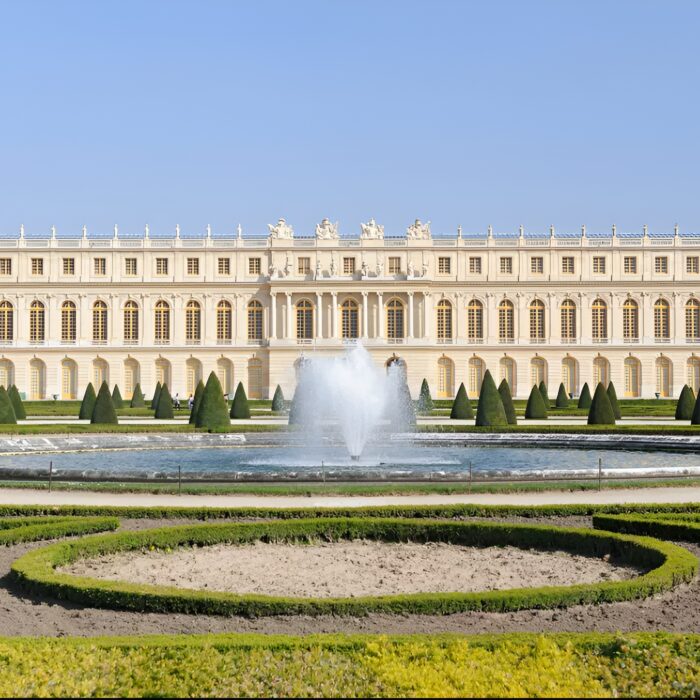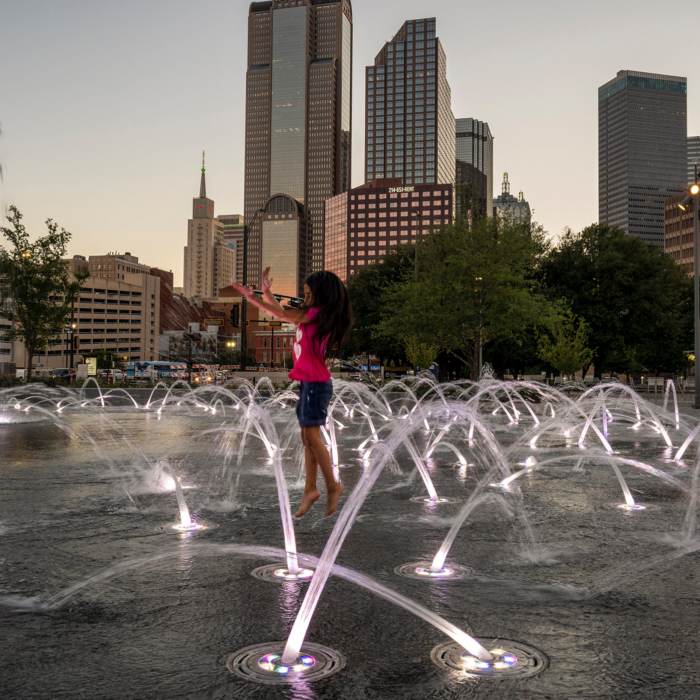Water features of all kinds are an integral part of French gardens, and at the Garden of Versailles, exquisite visuals are rendered by waterfalls amongst the groves, spurts of water in the fountains, and the calm surface of the water reflecting the sky and sun in the Water Parterre or the Grand Canal. Elevating the overall experience of visitors are two breathtaking fountains that speak of the incomparable grandeur that King Louis XIV envisioned for his garden. The Neptune Fountain and Latona Fountain both have unique stories, worth sharing, behind them.
The Neptune Fountain is the largest of all the fountain pools in the Gardens of Versailles. Fireworks during the summer months create spectacular displays that are reflected in the fountain’s large pool. Known at that time as the Dragon Fountain or Lake of the Pines, it was built under the direction of landscape designer Andre Le Notre, between 1679 and 1682. The design of the fountain underwent many transformations under successive reigns, and was only given its final definitive sculpted features by 1740. Decorated with stone vases and sea cupids, the fountain composed of three central sculpture groups: Neptune and Amphitrite by the Lambert brothers; Proteus by Edme Bouchardon; and Oceanus by Jean-Baptiste Lemoyne. The fountain was officially opened by King Louis XV of France and was greatly admired for the number, size and variety of water jets falling around the lead sculptures. It currently has 99 jets, constituting an extraordinary hydraulic system.
Latona’s fountain was inspired by The Metamorphoses by Ovide, illustrating the story of Latona, the mother of Apollo and Diana, protecting her children from the insults of the peasants of Lycia and pleading with Jupiter to avenge her. The god obliges by turning the inhabitants of Lycia into frogs and lizards. The central marble group in the fountain, featuring Latona and her children, was sculpted by the Marsy brothers, when the fountain was first created in 1668. It’s surrounded by six figures of peasants in mid-transformation, with 24 frogs positioned surrounding the fountain. It also has a parterre containing the two Lizard Fountains. Between 1687 and 1689, the fountain’s layout was modified by Jules Hardouin-Mansart, such that the central piece sat on a marble pyramid, instead of a rock, and faced the Grand Canal, rather than the palace.
In an effort to recreate the grandiose and royal atmosphere of the olden times, the gardens, and its fountains, are currently being transformed under a 3 year renovation project. The expert French lighting design firm Les Eclairagistes Associates (LEA) has brought Crystal on-board, to provide lighting design advice and equipment to illuminate these fountains, thereby enhancing the appeal of these water features and sculptures. In order to create the desired lighting appeal, Crystal supplied each individual water effect and sculpture with its own light source, and this was achieved by upgrading each fountain with modern submersible LED lighting.
To this day, the water fountains of the Palace of Versailles are its most important feature owing to the public appeal towards the musical fountain shows it hosts. What is extraordinary about these fountains is that they still work on the same mechanism as they did in the past, and to ensure the original components were undisturbed, Crystal designed custom stands for each new light that allowed the new LEDs to rest atop the historical fountain mechanics.
The gardens, originally lit primarily by natural sources like fire torches and candles, posed a major challenge in terms of recreating the exact effect of candle light falling on water and the fountain sculptures. It was a task that couldn’t be accomplished by the traditional RGB LED lighting. However, this feat was achieved by Crystal’s RGBACL lighting technology, with its unbeatable range of pantone shades and tones, custom color-matching precision and primary and white variants.
With the transformation of these key fountain features, the Gardens of Versailles will remain the most attractive destination for tourists travelling to France each year.




